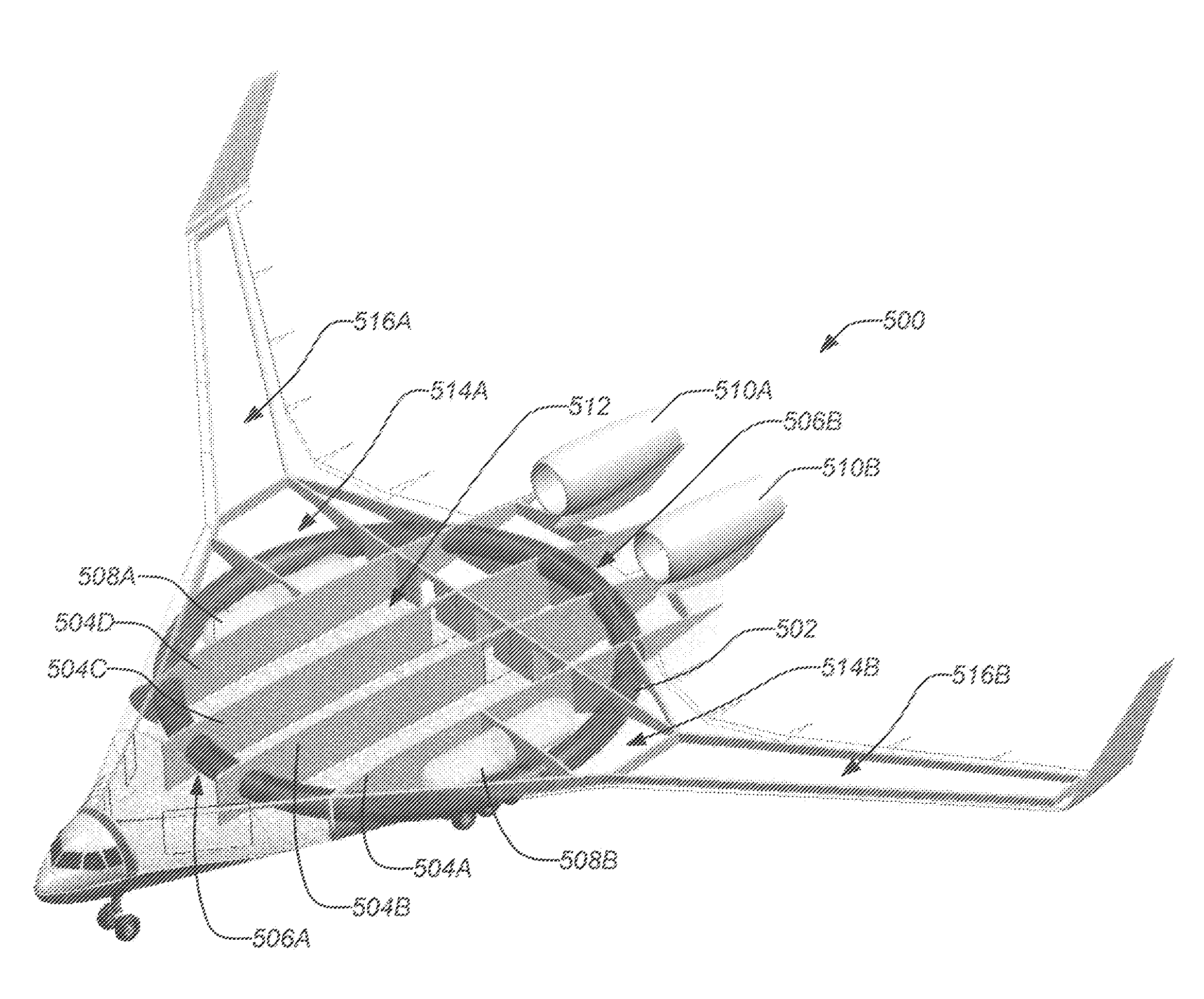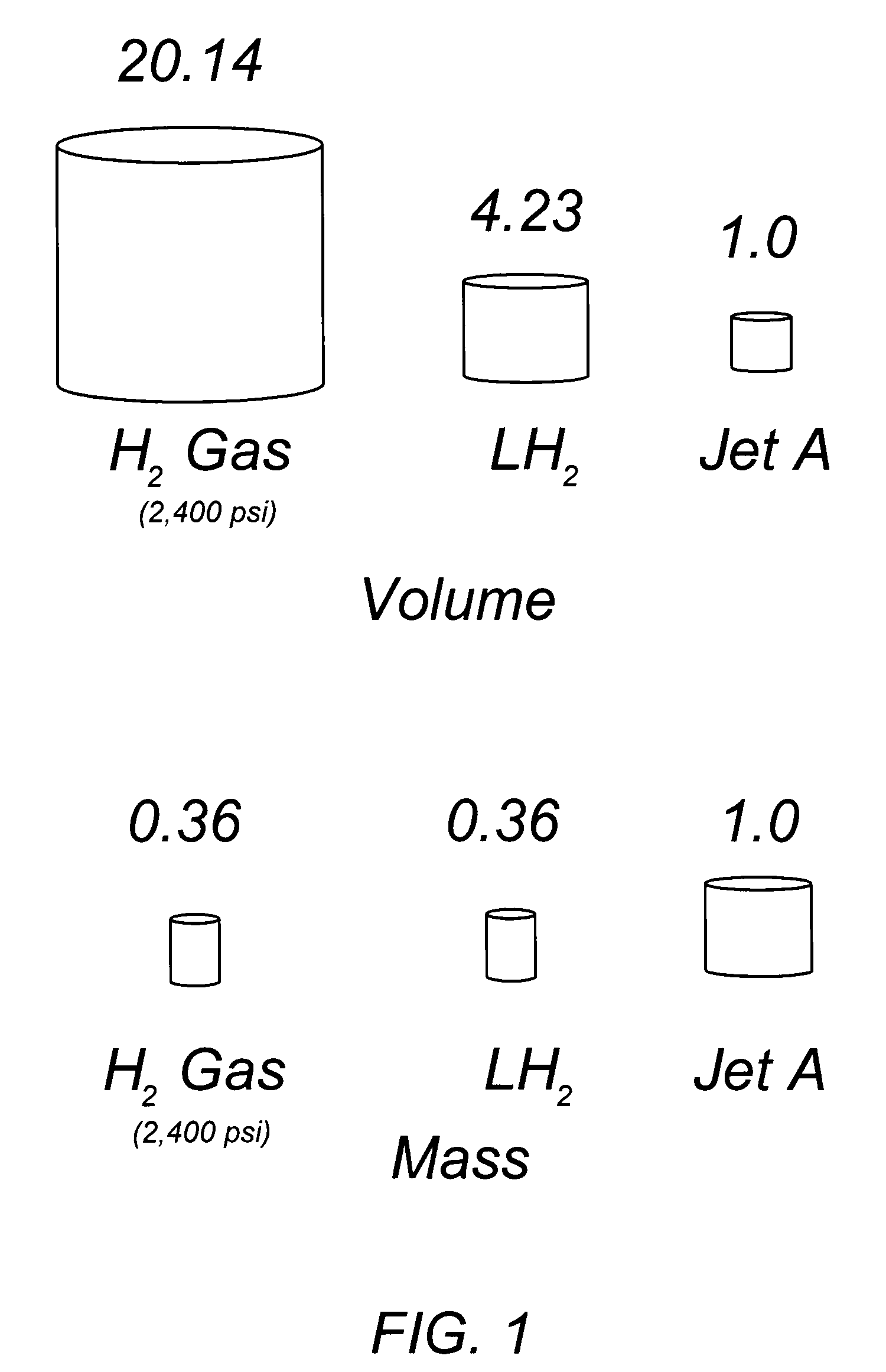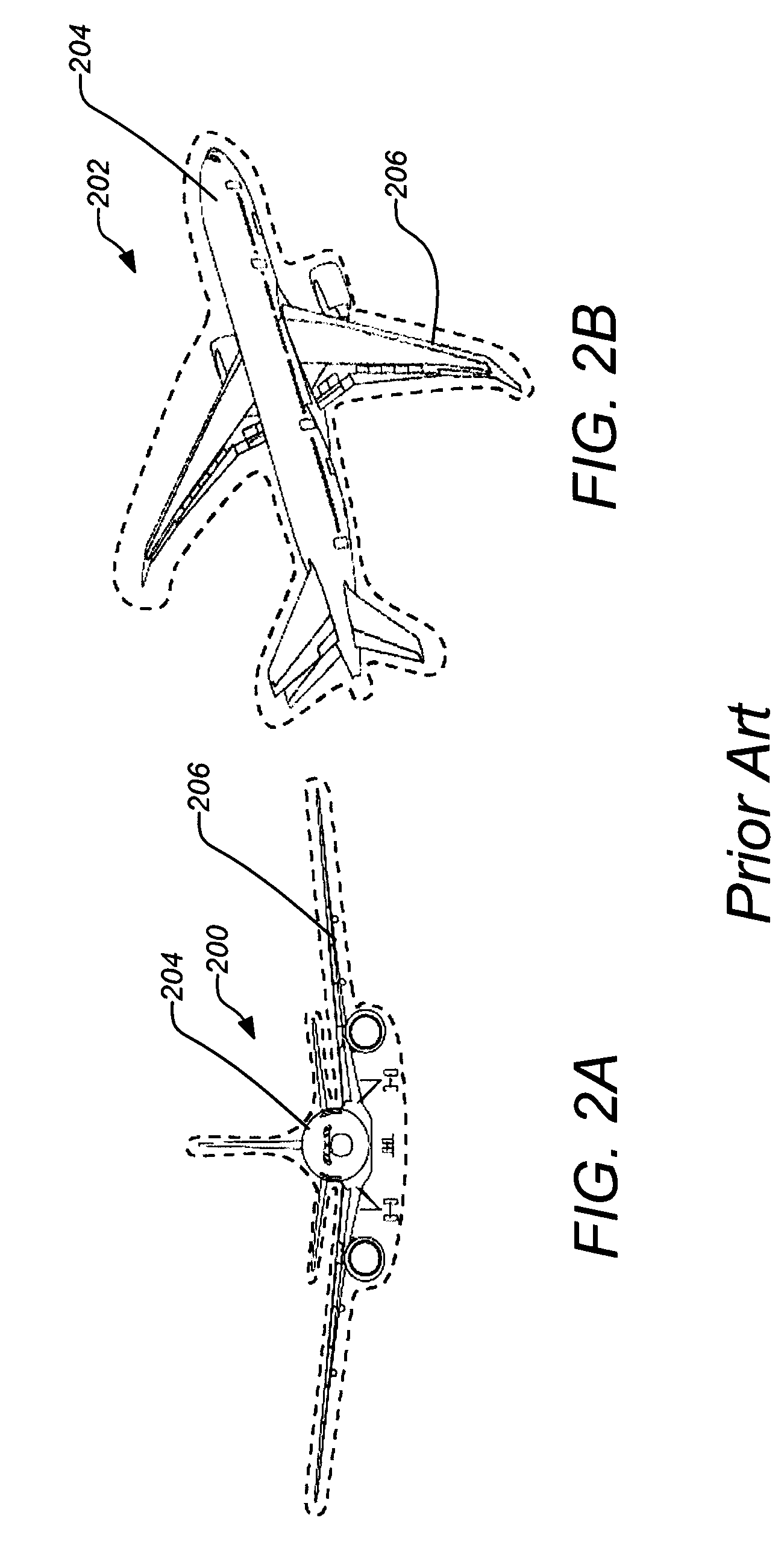Hydrogen fueled blended wing body ring tank
a technology of wing body ring tank and hydrogen fuel, which is applied in the field of aircraft fuel tank system, to achieve the effect of avoiding increasing the aerodynamic shape of the aircraft, and reducing the weight of the tank
- Summary
- Abstract
- Description
- Claims
- Application Information
AI Technical Summary
Benefits of technology
Problems solved by technology
Method used
Image
Examples
Embodiment Construction
[0030]1. Overview
[0031]As previously mentioned, conventional tube-and-wing aircraft design approach that would employ spherical or cylindrical tanks of sufficient total volume have a number of drawbacks. The usable fuselage cabin space is reduced which also lowers aircraft functionality. In addition, such configurations possess an expanded fuselage aerodynamic cross section with frontal and surface areas, resulting in increased drag. Furthermore, it is commonly necessary to package multiple small tanks into the available wing and fuselage areas, which increases the aircraft weight.
[0032]Some of the benefits of packaging sufficient fuel volume within an efficient aerodynamic cross-section include decreased emissions and increased payload and / or range performance. Previous techniques for aircraft fuel storage involved tube-and-wing aircraft with cylindrical hydrogen tanks which contained an insufficient fuel volume, an inefficient aerodynamic cross section, or an unacceptable weight.
[...
PUM
 Login to View More
Login to View More Abstract
Description
Claims
Application Information
 Login to View More
Login to View More - R&D
- Intellectual Property
- Life Sciences
- Materials
- Tech Scout
- Unparalleled Data Quality
- Higher Quality Content
- 60% Fewer Hallucinations
Browse by: Latest US Patents, China's latest patents, Technical Efficacy Thesaurus, Application Domain, Technology Topic, Popular Technical Reports.
© 2025 PatSnap. All rights reserved.Legal|Privacy policy|Modern Slavery Act Transparency Statement|Sitemap|About US| Contact US: help@patsnap.com



